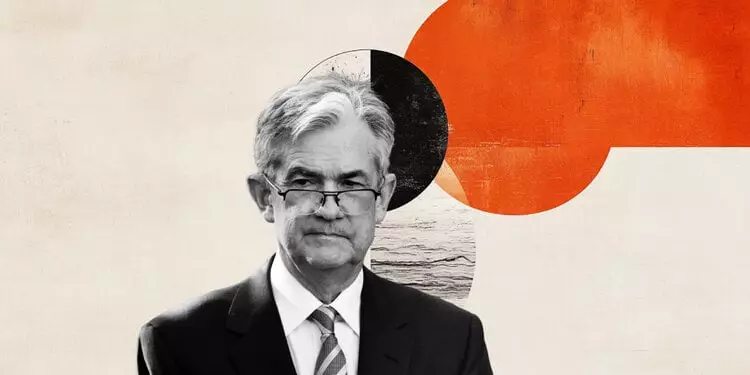In a recent twist in economic discourse, U.S. Treasury yields have exhibited a notable decline, a trend that can be traced back to Federal Reserve Chair Jerome Powell’s remarks on the central bank’s current assessment of monetary policy. Following an uptick in yields, the market is now witnessing a gentle easing, with average yields dipping by approximately two and a half to three basis points. This adjustment coincides with Powell’s communicative efforts, where he reassured markets that the Fed is in no rush, emphasizing the importance of patience in navigating the current economic climate. Such statements can significantly alter investor sentiment, and they provide crucial insights into the Fed’s stance, particularly as inflationary pressures and economic uncertainties continue to loom.
Currently, the U.S. 10-year Treasury yield stands at around 4.271%, trailing the recent highs and indicating a more dovish sentiment amidst rising caution in global markets. This decline in yields correlates with the U.S. Dollar Index (DXY), which has also seen a slight retreat to 99.51 after peaking at 99.63. The DXY’s performance reflects broader movements within the currency markets, as the Greenback finds itself under pressure from decreasing yields that may imply a less aggressive monetary policy ahead. The implications of these shifts cannot be overstated; they signal market adjustments to expectations regarding interest rate changes and the Fed’s broader economic objectives.
The Dual Mandate Dilemma
The dual mandate of the Federal Reserve—achieving maximum employment while maintaining price stability—forms the bedrock of its monetary policy. Powell’s assertion that current policy remains appropriate highlights the complexities inherent in balancing these dual objectives. If tariffs, which act as an economic drag, persist in creating uncertainty, achieving these goals becomes increasingly challenging. Powell hinted at this conundrum, stating that without a resolution to trade disputes, progress on employment and inflation could stall.
The Federal Open Market Committee (FOMC), responsible for crafting monetary policy, convenes regularly to assess economic indicators and adjust their strategies accordingly. In its toolkit, the committee employs instruments such as interest rate adjustments, which directly influence borrowing costs and, in turn, the strength of the U.S. Dollar. An increase in rates generally bolsters the dollar, creating an attractive environment for foreign investment. Conversely, a drop in rates signals an accommodating stance designed to stimulate growth through increased borrowing.
The Influence of Quantitative Easing and Tightening
As the Federal Reserve maneuvers through these challenging waters, it may consider non-standard measures such as Quantitative Easing (QE) and its reverse process, Quantitative Tightening (QT). QE, which gained prominence during the 2008 financial crisis, involves the Fed significantly ramping up credit flow into the financial system by purchasing high-grade bonds from financial institutions. This process is designed to inject liquidity when standard monetary policy tools become ineffective, such as when rates approach zero.
However, while QE can provide immediate relief during financial turmoil, it tends to weaken the U.S. Dollar long-term, as increased money supply dilutes the currency’s value. On the flip side, QT represents a tightening of monetary policy where the Fed halts bond purchases and allows existing securities to mature without reinvestment. QT is typically seen as a measure that supports the U.S. Dollar’s strength, reflecting a tightening stance aimed at countering inflation.
Speculations on Future Policy Directions
Powell’s recent utterances instigate much speculation about the Fed’s policy pathway. By declaring that the Fed can afford to be patient, he sends a signal to investors that the economic landscape remains complex and volatile. The dual mandate’s tug-of-war between fostering employment growth and controlling inflation will likely remain at the forefront of the Fed’s considerations; how this balance is achieved will be critical in shaping future monetary policies.
As investors and economists scrutinize Powell’s statements, it’s clear that uncertainty surrounds tariffs and international trade relationships, which weigh heavily on economic forecasts. The impact of these external factors on domestic economic policy cannot be understated, as the Fed navigates the tumultuous terrain of global finance. Ultimately, the markets will be keenly observing how the Fed adapts its strategies in response to forthcoming economic data and geopolitical developments.

